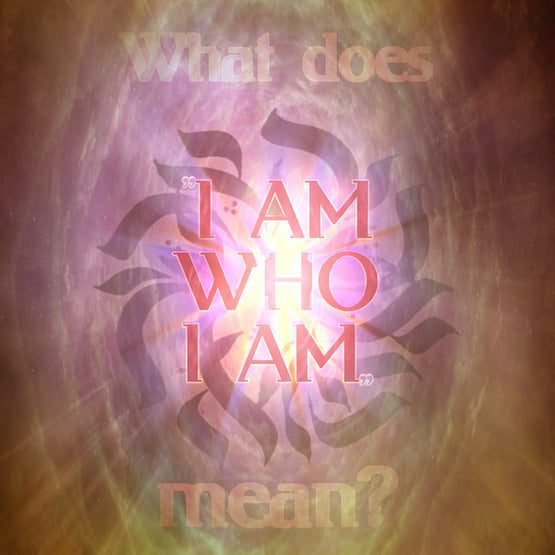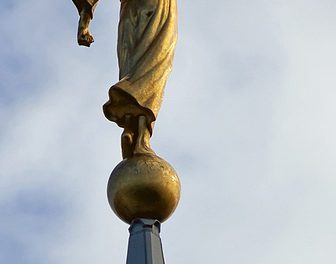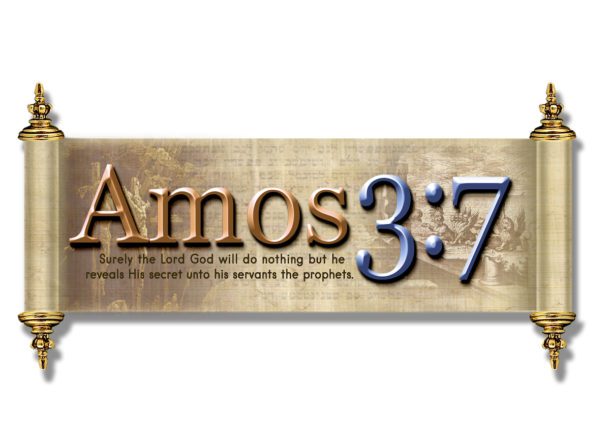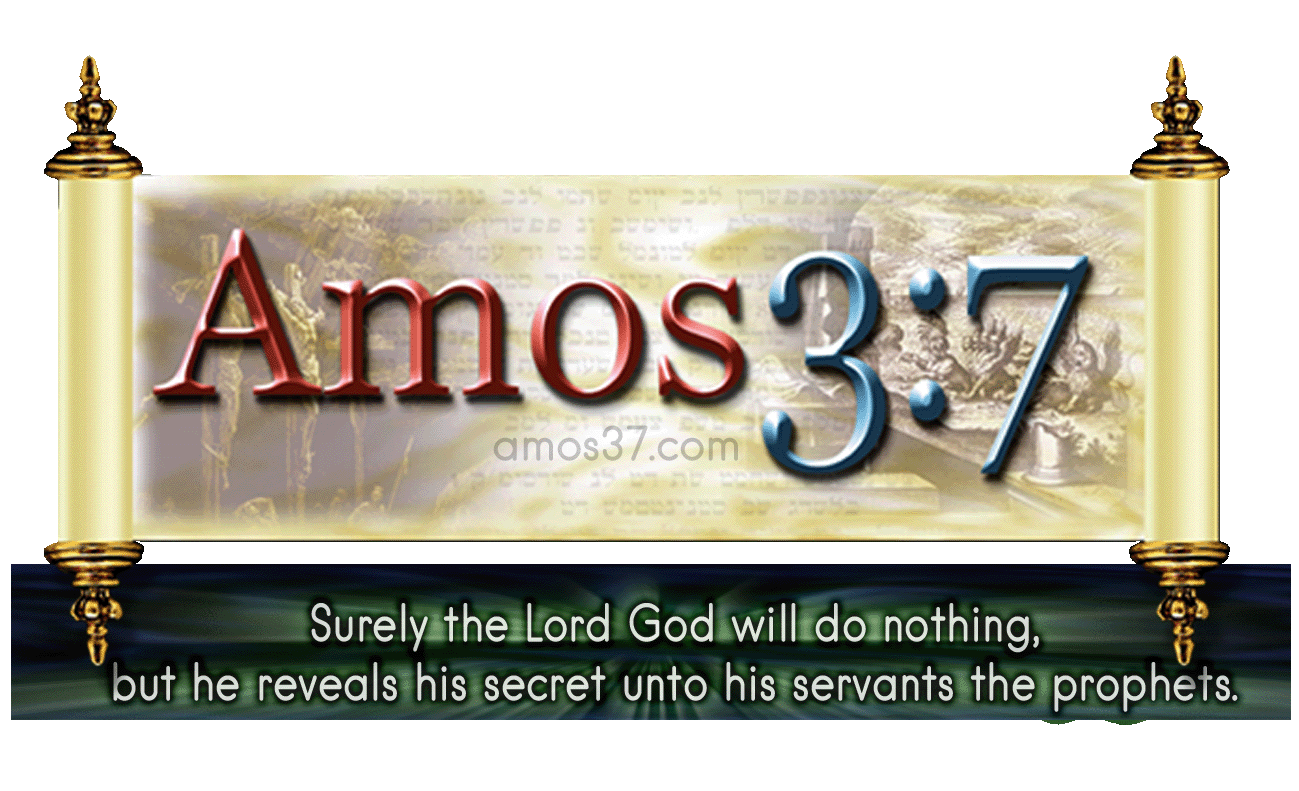LTRJ Note: Many cults and aberrant “Christian” groups reject the biblical view that Jesus Christ is the eternal God come in the flesh (that is, they reject the eternal and continuous deity of Christ). There are various slants on this, such as many Word/Faith teachers believing that Jesus was not God while He lived on the Earth but laid His deity aside to become a man. Mormon doctrine teaches that Jesus was not an eternal God but attained that position as did His Father in Heaven. The bottom line is that the eternal deity of Christ is rejected by these groups, but the Bible clearly identifies Him as God come in the flesh (i.e., the Son) and that He is eternal. With the growing popularity within evangelical circles for the Mormon-influenced production, The Chosen, we are re-posting Mike Oppenheimer’s booklet/article on the deity of Jesus Christ. If you belong to a group that rejects the total and entire eternal deity of Jesus Christ, we urge you to search the Scriptures where you will find truth.
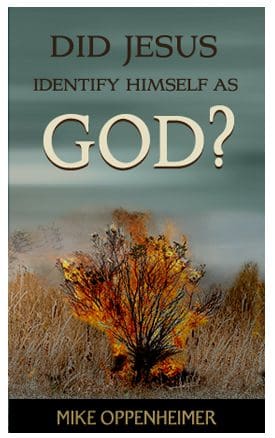
“Did Jesus Identify Himself as God?”
No prophet, other than Jesus, could have said with authority, “he that believeth on me shall never thirst” or “he that believeth on me hath everlasting life” (John 6:35 & 47). No one but Jesus could have said with that same authority, “follow me” (Luke 18:22). Nor could any other prophet state, with signs and wonders proving his authority, that there are eternal consequences for not believing He is just who He claimed to be. When Jesus said, “for if ye believe not that I am he, ye shall die in your sins” (John 8:24), it was the definitive statement of His very being. In fact, this declaration of His is the crux of the entire Christian faith.
It is recorded in the Gospels 23 times that Jesus said, “I am,” seven of which are specifically stated to identify His deity.
In fact, if one were to truly seek to understand the deity of Christ in the Gospels, John’s is the perfect place to start. It is here we begin to fully understand what Jesus meant when He applied to Himself the name “I AM,” the name that God revealed to Moses at the miracle of the burning bush, recorded in the Book of Exodus.
The Distinctive Nature of the “I Am” Statements
In the Book of Exodus, where God first appeared to Moses when he turned aside from tending his flock to see the miracle of the burning bush, Moses asked the LORD:
Behold, when I come unto the children of Israel, and shall say unto them, The God of your fathers hath sent me unto you; and they shall say to me, What is his name? what shall I say unto them?
And God said unto Moses, I AM THAT I AM: and he said, Thus shalt thou say unto the children of Israel, I AM hath sent me unto you. (Exodus 3:13-14)
God’s own name for Himself—I AM—means the self-existent One. This I AM in the Hebrew is YHWH, where we get the name Yahweh. The Hebrew of Exodus 3:14 is hayah asher hayah, meaning, I AM THAT I AM. The name is stated as ego eimi in the LXX (Septuagint, the Greek translation of the Hebrew Old Testament).
In the New Testament, Jesus applied to Himself the name I AM to demonstrate His claim to deity. The I AM statements are made with a predicate, and the Greek words ego eimi used by John are distinct and applied only to Jesus.
It is crucial to an understanding of the New Testament to realize that the Jewish audience to whom Jesus spoke knew immediately that His “I AM” statements referred directly to the name of God revealed to Moses in the Book of Exodus. They understood fully that He was appropriating the name I AM because He claimed to be the God of the Old Testament. This, specifically, was why the Jewish leaders accused Him of blasphemy and picked up stones to stone Him to death—“. . . that thou, being a man, makest thyself God” (John 10:33).
John 8:56-59 contains perhaps the most direct reference to Jesus’ deity. In this confrontation with His Jewish listeners recorded immediately after He forgave the woman caught in adultery, Jesus said:
Your father Abraham rejoiced to see my day: and he saw it, and was glad. Then said the Jews unto him, Thou art not yet fifty years old, and hast thou seen Abraham? Jesus said unto them, Verily, verily, I say unto you, Before Abraham was, I am. Then took they up stones to cast at him.
In this passage, it would be a massive mistake, both grammatically and theologically, to take Jesus’ words as meaning merely that He existed from or before Abraham’s time. This was not the meaning at all. Here, Jesus is directly saying, “Yahweh is my name.”
Jesus made a definitive statement that before Abraham came into existence or was born, He (Jesus) already was. His “I AM” reference could have been plainly and accurately translated as, “I have existed before all ages, before anything was created. My existence is eternal, without respect to time. I AM THAT I AM.”
In our day of cafeteria theology, self-indulgence and denial of absolute truth are well in vogue. Leaders of an ever-growing list of cults, heretical sects, and religious fads promote themselves as masters who “have arrived.” But the Bible speaks sternly of those who “. . . promise them [their followers] liberty, [while]they themselves are the servants of corruption” (2 Peter 2:19).
But Jesus made an absolute claim to be God and confirmed it by His resurrection. Hence, only He is the Savior of the world (John 4:42).
And Jesus answered and said unto them, Take heed that no man deceive you. For many shall come in my name, saying, I am Christ; and shall deceive many. (Matthew 24:4-5)
Christ Revealed Himself as Our Eternal Food
“I am the bread of life” (John 6:35). This is the first of the “I AM” proclamations contained in the Book of John, said in the discourse which followed the feeding of the multitude. During the discourse, Jesus told the crowd:
Labour not for the meat which perisheth, but for that meat which endureth unto everlasting life, which the Son of man shall give unto you: for him hath God the Father sealed. (John 6:27).
As He sought to elicit faith in Himself, He was met with a challenge to “demonstrate His credentials,” so to speak. They asked him, “What sign showest thou then, that we may see, and believe thee?” To this they added, “Our fathers did eat manna in the desert; as it is written, He gave them bread from heaven to eat” (v.30-31). With this verse, the people referred to the Book of Exodus, where God rained down manna from heaven to feed them.
But Jesus corrected their misunderstanding when He stated:
Verily, verily, I say unto you, Moses gave you not that bread from heaven; but my Father giveth you the true bread from heaven. For the bread of God is he which cometh down from heaven, and giveth life unto the world. (John 6:32-33)
With this, Christ reminded them to think in spiritual terms, not earthly one as they were doing, having just recently come from the miracle of the loaves and the fishes. In fact, they were not asking for the bread from heaven, which is how Jesus was offering Himself. They wanted an earthly king and were overjoyed to have one who could perform miracles to their earthly benefit. In response to their request of “Lord, evermore give us this bread” (vs. 34), Jesus made the claim:
I am the bread of life: he that cometh to me shall never hunger; and he that believeth on me shall never thirst. (John 6:35)
In their long sojourn with Moses, the Israelites had two constant complaints—hunger and thirst. But in the Book of John, Jesus is not speaking of the physical but the spiritual, referring to Himself as the answer to the needs of the human heart. He alone is our source of spiritual nourishment. Since bread is a basic food, His statements claim that He came to fulfill this role for everyone. He is the “Saviour of the world” (John 4:42) and gives life to the world (John 6:33). Jesus alone is the bread of life. All other bread satisfies earthly hunger, and that only temporarily. Physically, one will hunger again; like the manna in the wilderness which was good for the day it was given but not for the next day. It would sustain them for a day, but did nothing for them long-term. With Christ, however, the salvation He provides is everlasting, and once tasted, those receiving it will be eternally satisfied. As Jesus said in verse 51:
I am the living bread which came down from heaven: if any man eat of this bread, he shall live forever.
Jesus identified Himself as the sustenance man needs to survive in order to be preserved from eternal death and separation from God. When Jesus said to the people, “I am the bread of life,” and “the bread of God is he which cometh down from heaven,” He is making His heavenly origins known.
Christ Revealed Himself as Our Light
In the beginning of his Gospel, John introduces us to Jesus as both the light and life, declaring in chapter one, verses 3-5:
All things were made by him: and without him was not anything made that was made. In him was life; and the life was the light of men. And the light shineth in darkness, and the darkness comprehended it not.
Darkness in the above verse is representative of what is fallen and what is ignorance or sin.
The apostle wrote to us that Jesus is the revelation of truth and salvation for everyone, John 1:8-9:
He [John the Baptist] was not that Light, but was sent to bear witness of that Light. That was the true Light which lighteth every man that cometh into the world.
In His second “I AM” statement, Jesus once again picks up the light metaphor and expands on what had been previously written, affirming that He is the true light, the light of all men. John 8:12 states:
Then spake Jesus again unto them, saying, “I am the light of the world: he that followeth me shall not walk in darkness, but shall have the light of life.”
John tells us Jesus made this claim at the Feast of Tabernacles in the Temple courts. The backdrop to the Feast of Tabernacles is important, as two major symbolic ceremonies took place. The first was the outpouring of water on the steps by the Levitical priests, as the choir sang the Great Hallel (Psalms 113-118). The second was the lighting of several large candelabra (menorahs) in the Temple area, which lit up the Temple with a light that could be seen for miles. Jesus took the opportunity of using these two ritualistic symbols to illustrate His teachings and person (7:37-38; 8:12).
In the eighth chapter of the Book of John, where Jesus spoke of Himself as the light of the world, He taught in the Court of the Women, which was the most public part of the temple. Four golden candelabra stood there, each with four golden bowls, each of which was filled with oil. These were lit on the first night of the Feast of Tabernacles (in reference to the memory of the pillar of cloud by day and of fire by night). The figure itself was familiar to all, drawn from prophecy and tradition. According to Hebrew tradition, God is light, and Light was one of the names of Messiah, as well as a reference to His work among His people (Isaiah 9:2, 42:6, Malachi 4:2; Luke 2:32; John 8:12; John 9:5; 1 John 1:5).
God is described as light or being clothed in light. Isaiah 60:19 reminds us that “the LORD shall be unto thee an everlasting light, and thy God thy glory.” Psalm 104:2 states that God is the One who “coverest thyself with light as with a garment.” In 1 Corinthians 2:8, the apostle Paul declares Jesus to be the “Lord of glory,” a term denoting His deity because it refers to God’s shekinah, His light.
With this as the background, Jesus’ exclusive claim of being the light of the whole world was, in effect, a proclamation that He was the fulfillment of their Jewish faith, a very exclusive faith given to them by God.
The light metaphor is also found in Old Testament events and typology. The glory (the presence of God) in the cloud led the Hebrews to the Promised Land (Exodus 13:21-22) and protected them from their enemies (Exodus 14:19-25). The Israelites sang, “The LORD is my light and my salvation” (Psalm 27:1). Isaiah the Prophet tells us that the Servant of the LORD (Messiah) was given as a light to the Gentiles, that He might bring salvation to the ends of the earth (Isaiah 49:6). The coming Millennial Age will be a time when the LORD Himself will be the light of His people (Isaiah 60:19-20; Revelation 21:23-24).
Jesus’ declaration at the Temple made it clear who He is. He is not the light of the Jews only, but “the light of the world.” His reference to being the light of every man bespeaks that those who reject Him reject God, and that a person’s eternal destiny depends on his acknowledgment and acceptance of who Jesus claims to be.
In light of all these Scriptures, it is evident that one cannot praise God in truth, and yet deny the deity of Jesus, the Son of God.
Christ Revealed Himself as the Door
“I am the door: by me if any man enter in, he shall be saved, and shall go in and out, and find pasture” (John 10:9).
To “be saved” means “to have eternal life,” which only God can give. Jesus, in His third “I AM” statement, is therefore saying, “I am the Door” or “the way in,” referring to His deity.
Within Jesus’ statement reside a number of figures of speech (v.6), which consist of some prominent metaphors. For example, “sheepfold” (10:1), “shepherd” (v.2), “porter” (watchman) (v.3), “door,” or “gate” (v.7). The door is the entry into a house or a place of safety.
A shepherd in charge of his flock has to be constantly vigilant. In biblical times, he would lay himself down in front of the only way in or out of the sheep pen, in order to guard the flock. Anything approaching the sheep’s place of safety would first have to pass over him. In reference to this, Jesus begins His discourse by saying in verse 1:
Verily, verily, I say unto you, He that entereth not by the door into the sheepfold, but climbeth up some other way, the same is a thief and a robber.
So we see that Jesus is saying that only He, and no other, is the means by which the sheep (those who accept Him as Lord and Savior) may enter into the promised fullness of life. To emphasize this, He continues in John 10:10:
The thief cometh not, but for to steal, and to kill, and to destroy: I am come that they might have life, and that they might have it more abundantly.
Christ Revealed Himself as Our Shepherd
“I am the good shepherd: the good shepherd giveth his life for the sheep” (John 10:11). In His fourth “I AM” statement, Jesus shows the depths of His love for us. He adds an adjective to the word shepherd, and that is the word “good.” Here again Jesus is contrasting Himself with the religious leaders to whom He is speaking. Such leaders demonstrated that they were not good shepherds, but rather, they are called in this chapter “hirelings,” a derogatory term. A hireling is a shepherd who works only for pay and cares nothing for the actual health of the sheep (vs. 12-13), and who will, in fact, run away at the first sign of danger.
When Jesus used the term “the good shepherd,” He was speaking of His intrinsic goodness, His moral nature and beauty. The word shepherd demonstrates a position of authority over the sheep—that is, the people who come to Him in faith. He rules over all, of course, believer and unbeliever alike, but in this passage, He shows His goodness toward those who are His own. As the Good Shepherd, He protects, warns, leads, guides, and nourishes the sheep in His charge. In turn, we (the sheep) admit our utter defenselessness and total dependence on Him.
King David made the allusion to this concept beautifully in his 23rd Psalm when he said in the first verse, “The LORD is my shepherd; I shall not want.”
In modern terms this means that David said, “I have everything I need in You, Lord. I shall have no lack whatsoever.”
In His Good Shepherd analogy, Jesus is also referring to His mission. In at least three verses (15, 17, and 18), He speaks of “laying down” His life for the sheep, meaning that He protects them to the point of death, which was accomplished literally at His crucifixion. His wonderful love encompasses all who come to Him in faith, whether Jew or Gentile.
The shepherd of the Old Testament was found to be both a leader and a companion to his sheep. First Samuel 17:34-37 is a remarkable example of the young David, who is an Old Testament prefigure of Christ protecting his sheep. The shepherd knows his flock and is gentle with them (Proverbs 27:23). The Shepherd carries the lambs in his arms (Isaiah 40:11), rescues them from those who abuse them (Ezekiel 34:11-22), and seeks them out when they wander away (Isaiah 53:6).
In New Testament references, Matthew11:28 reveals the heart of our Shepherd for those who belong to Him, promising rest for the weary. One of our Lord’s most famous parables is of the shepherd who seeks after the lost sheep (Luke 15:1-7).
In John 10:16, Jesus states that He builds His flock, and they shall be one flock with Him as the Shepherd over them. This He speaks concerning His salvation, words which would mean nothing had He not shown Himself repeatedly to be the Son of God. John the Baptist referred to Christ as the only sacrifice for sins when he declared, “Behold the Lamb of God, which taketh away the sin of the world” (John 1:29). So, by His sacrifice, once for all, has salvation come to all who receive Him. Again, presenting Himself as the sinless sacrifice, Jesus shows clearly His deity.
In addition to the John 10 discourse, Jesus is called, “the Shepherd and Bishop of your souls” (1 Peter 2:25), the “Chief Shepherd” (1 Peter 5:4), and the “Great Shepherd” (Hebrews 13:20).
The mercy of the Great Shepherd is exemplified in Matthew 9:36:
But when he saw the multitudes, he was moved with compassion on them, because they fainted, and were scattered abroad, as sheep having no shepherd.
As the Shepherd of the sheep (Christians), Jesus has declared Himself the One whom the sheep are to follow. He makes it perfectly clear that those who refuse to follow Him refuse to follow God; and if they do not follow Jesus, then they are not His sheep. As He said in John 10:27-30:
My sheep hear my voice, and I know them, and they follow me: and I give unto them eternal life; and they shall never perish, neither shall any man pluck them out of my hand. My Father, which gave them me, is greater than all; and no man is able to pluck them out of my Father’s hand. I and my Father are one.
The response to these words by His pharisaical listeners is startling—“Then the Jews took up stones again to stone him” (John 10:31).
Unrepentant sinners and mockers can weave all the lies and confusion they want, denying that Christ ever called Himself God, but their denials are meaningless in light of the Jews’ response to Jesus. The Jews of Jesus’ time knew perfectly well what He meant in His “shepherd’s” discourse. They knew He was identifying Himself with the character and nature of God.
For a good work we stone thee not; but for blasphemy; and because that thou, being a man, makest thyself God (verse 33).
There is only one Shepherd from the Old Testament continuing into the New Testament (Ezekiel 34:23, Zechariah13:7). Christ’s declaration of exclusivity as the Shepherd sent by God demonstrated that He was the fulfillment of these prophecies (John 10:8, 11, 14).
In the magnificent context of His salvation for those who receive Him, Jesus is not only the Shepherd, but the Lamb, God’s one sacrifice for sin forever:
For the Lamb which is in the midst of the throne shall feed them, and shall lead them unto living fountains of waters: and God shall wipe away all tears from their eyes (Revelation 7:17).
Christ Revealed Himself as the Resurrection and the Life
“I am the resurrection, and the life: he that believeth in me, though he were dead, yet shall he live: and whosoever liveth and believeth in me shall never die. Believest thou this?” (John 11:25-26).
The one main hope of mankind is that physical death is not the end, that the grave is not the final statement of man’s futility, but rather that life is eternal, continuing forever. In John 11:21-26, Jesus stood before a weeping Martha, whose brother Lazarus had died four days earlier. He told her that her brother, who was also Jesus’ friend, would rise again. She misunderstood, thinking He meant the final resurrection at the Last Day. But with the assurance only God gives, Jesus replied:
I am the resurrection, and the life: he that believeth in me, though he were dead, yet shall he live: and whosoever liveth and believeth in me shall never die. Believest thou this?
Here, in this astonishing declaration, Jesus states that He not only imparts life, but that He is Life. His being the Resurrection means that even if death lays claim on a believer, it will not be a permanent death, but one which will be swallowed up by eternal life.
This is not the first time in John’s Gospel that Jesus spoke of His authority over death. After He had cleansed the Temple, driving out the moneychangers and cattle with a whip of cords He had made, the irate Jews demanded a sign of His authority to do so. He declared:
Destroy this temple, and in three days I will raise it up . . . But he spake of the temple of his body. (John 2:19-21)
And again, in His Good Shepherd discourse, Jesus made clear His absolute authority over death when He said:
Therefore doth my Father love me, because I lay down my life, that I might take it again. No man taketh it from me, but I lay it down of myself. I have power to lay it down, and I have power to take it again. This commandment have I received of my Father. (John 10:17-18)
In this scriptural passage, Jesus declares Himself Lord over even death, not just the death of others, but over His own physical death which would be accomplished on the Cross. None but God could make such statements and verify them by doing what He said He would do.
Jesus Revealed Himself as the Way, the Truth, and the Life
In the fourteenth chapter of John, Jesus reveals Himself more fully to those closest to Him—the remaining eleven disciples with whom He just celebrated the Passover feast, prior to His suffering and death. Foretelling His leaving them by way of the crucifixion, Jesus reminds them that “whither I go ye know, and the way ye know” (vs. 4).
Thomas, unfairly known as “the doubter,” desires further explanation, and Jesus replies, “I am the way, the truth, and the life: no man cometh unto the Father, but by me” (John 14:6).
In this further, three-part declaration of His nature and earthly mission, Jesus reiterates that only through Him can men be saved, thus again declaring Himself to be God.
Jesus’ reference in John 14:2 to His Father’s house indicates a very specific place—one only for believers in Him. The way of salvation is the only way that leads to the Father, and receiving His Son for the forgiveness of sins is the only way to be taken to His Father’s place of dwelling (His “house”). This entire biblical passage speaks again of Christ’s exclusivity, a term much derided in our politically-correct society but one which is nonetheless accurate. Contrary to popular unbelief, the so-called “many paths to God” do not exist. Jesus said, “narrow is the way which leadeth unto life, and few there be that find it” (Matthew 7:14). Buddha, Mohammed, Confucius, Lao Tzu, and innumerable other religious prophets lead their devoted, but lost, followers away from “the Way,” the salvation which Jesus assured us comes through Him only. It is only through humbly receiving Him and believing in His death and resurrection that sinners can be reconciled to God. This is what is called the Gospel. When Jesus said, “I AM the way, the truth, and the life,” He also explained, “No man cometh unto the Father but by me” (John 14:6). Jesus is not one of many ways to God that we can choose from, but the only way for all time.
Speaking of Himself as “the Truth” means that His words, hence His character and His deity, are unalterable. Whatever the Father gave Jesus to do and to say, He did perfectly, and His revealing of the Father to us can be trusted without reservation. Not only because He tells the truth but because He is truth incarnate (John 1: 1,14), His word is settled in heaven forever (Psalm 119:89). The complete revelation of God is declared in Him (John 1:18), and the Bible properly calls Him God.
Jesus’ declaration of Himself as “the Life” reaffirms what He said about Himself in previous chapters, indicating that He is able to give life to those who are both spiritually and physically dead. He said it would be His voice the dead would hear and respond to on the Last Day (John 5:28-29). Showing Himself to be God, He stated:
For as the Father raiseth up the dead, and quickeneth [gives life to] them, even so the Son quickeneth [gives life to] whom he will. (John 5:21)
This, then, is yet another statement of exclusivity, a position reserved for Jesus alone. He alone is the way to God; and through His historically documented resurrection, He has proven Himself completely reliable. He stands in a relation to truth that no one else does.
Again, when Jesus used the “I AM” construction by itself or attached to an Old Testament example, He was indicating His divinity. John communicates this in various manners to show who the Messiah is from the Old Testament background.
Jesus Revealed Himself as the True Vine
Many Old Testament analogies relate to the vine and the vineyard. The vine was often used as a symbol of the nation of Israel, and God is depicted as the vinedresser who both planted the vine and tends it. This can be seen in the following passages of Scripture:
Thou hast brought a vine out of Egypt: thou hast cast out the heathen, and planted it. Thou preparedst room before it, and didst cause it to take deep root, and it filled the land (Psalm 80: 8-9).
For the vineyard of the LORD of hosts is the house of Israel, and the men of Judah his pleasant plant. (Isaiah 5:7)
In His teaching to His disciples just prior to being arrested, Jesus spoke also of the vine and vinedresser, an Old Testament analogy of which they would have been well aware. He told them:
I am the true vine, and my Father is the husbandman (vinedresser). Every branch in me that beareth not fruit he taketh away: and every branch that beareth fruit, he purgeth (cleanses) it, that it may bring forth more fruit. (John 15:1-2)
There is an intimacy here—the final, loving, encouraging words to His remaining disciples (Judas had already left to betray Him). He tells them to cleave to Him, to hold onto Him in unshakable faith, to “abide” in Him as He said in verses 4-5:
Abide in me, and I in you. As the branch cannot bear fruit of itself, except it abide in the vine; no more can ye, except ye abide in me. I am the vine, ye are the branches: He that abideth in me, and I in him, the same bringeth forth much fruit: for without me ye can do nothing.
There again is His exclusive declaration of His deity. Without Him, we can do nothing of spiritual significance.
In the Old Testament, the “vine” was Israel. All who wanted a saving relationship with God had to be “grafted,” so to speak, into Israel—physically by circumcision and spiritually by adhering to the Law. But as Israel repeatedly rebelled against the commands of the LORD, it was judged, often with consequences disastrous to the nation, but always with the intent to bring straying hearts back into right relationship with God (Psalm 80:15-16).
But with the appearing of Jesus, He declared Himself to be, now, the “vine,” and commands that all who would henceforth come to God, must come through Christ and abide in Him as closely as branches abide in the vine to which they are attached. He being the true vine means He is our lifegiver and the One who enables us to bear “fruit” as we abide in Him. This fruit, which glorifies God (Matthew 3:8, 7:20; Romans 6:22; Galatians 5:22-23), shows that we belong to Jesus, and assists us in the faithful proclamation of the Gospel.
The transformation of the believer into Christ-like character takes place by the work of the indwelling Spirit of Christ (Romans 8:9). This “I AM” saying in John chapter 15, like the others, indicates Jesus’ deity, for only God can indwell all people who receive Him.
Conclusion
In this unbelieving, mocking age, it seems almost everybody likes Jesus, so long as He can be made in their image. Two main stumbling blocks to most people’s acceptance of the truth of the Gospel accounts are:
1)Jesus’ deity—that He is, in fact, God; and
2)the exclusivity of Himself as the way of salvation
We live in an ungodly time that glorifies relative “truth” and shuns claims of exclusivity, even if these claims are uttered by God Himself. Political correctness demands that everyone gain admittance to literally any group he or she desires, whether on earth or in heaven. It insists that each person is good enough on his or her own merits to earn salvation. If grace is even considered at all, it is a human construct whereby everyone is granted forgiveness of sins. “After all, we’re only human.” “And what kind of God would punish forever those who have no interest in accepting Christ as the only way to salvation?” “Rather narrow-minded, isn’t it?”
The hard fact is that the Christian path is narrow and difficult (Matthew 7:14), and comparatively few find and live by it. The Christian way is one of taking up a daily cross, as Jesus took up His (Luke 9:23), and following Christ no matter what the earthly cost. In our pleasure-oriented society, most simply are not interested in pursuing the truth of the One who maps out that difficult kind of lifestyle for His followers.
For believers in Jesus, the truths He presents, while infinitely deep, are simple to grasp by childlike faith (Matthew 18:3). Unbelievers must convince themselves otherwise only through their own exhausting efforts, which rest wholly on their ability to perform immense theological contortions. They wrest Scriptures from context, apply contrived methods of exegesis, and fit their own image of Christ into a convenient spiritual compartment, one that allows them a false comfort, and one, unfortunately, big enough to include all manner of false prophets. But for all their efforts, they are left standing before the looming, unalterable Word of God, which continues to state for all time that—
In the beginning was the Word, and the Word was with God, and the Word was God. (John 1:1)
No man hath seen God at any time; the only begotten Son, which is in the bosom of the Father, he hath declared him. (John 1:18)
For had ye believed Moses, ye would have believed me: for he wrote of me. But if ye believe not his writings, how shall ye believe my words? (John 5:46-47, also referencing Deuteronomy 18:15-19)
. . . he that believeth on me, believeth not on me, but on him that sent me. And he that seeth me seeth him that sent me. (John 12:44-45)
. . . ye believe in God, believe also in me. (John 14:1)
. . . he that hath seen me hath seen the Father. (John 14:9)
For there is one God, and one mediator between God and men, the man Christ Jesus; who gave himself a ransom for all, to be testified in due time. (1 Timothy 2:5-6)
. . . who being the brightness of his glory, and the express image of his person, and upholding all things by the word of his power, when he had by himself purged our sins, sat down at the right hand of the Majesty on high. (Hebrews 1:3)
It is the way of this present age to encourage every people group to choose whatever gods, idols, or “masters” to which they would like to give allegiance. The world has always loved its false prophets, who speak comfort to the rebellious who indulge sin. And it shuns, often with derisive laughter, the cost of faithfulness to our Lord. Yet, through unbelievers’ stubbornness, they incur to themselves a cost beyond their imagining. To the unbeliever in heart, Jesus leaves a terrifying promise:
I go my way, and ye shall seek me, and shall die in your sins: whither I go, ye cannot come. (John 8:21)
Jesus then gave His reason for rejecting them:
Ye are from beneath; I am from above: ye are of this world; I am not of this world. I said therefore unto you, that ye shall die in your sins: for if ye believe not that I am he, ye shall die in your sins. (John 8:23-24, emphasis added to “I am”)
In the italicized portion above, the word “he” does not appear in the original (Greek) text but was added later for readability. Again, Jesus was identifying Himself as the I AM that Moses encountered at the burning bush.
But to believers in Christ—those who come to Him in faith and hold fast His testimony—He leaves to us, as He did to the grieving Martha, this everlasting promise from John 11:25-26:
I am the resurrection, and the life: he that believeth in me, though he were dead, yet shall he live: and whosoever liveth and believeth in me shall never die.
To order copies of Did Jesus Identify Himself as God?, click here.
Mike Oppenheimer is the founder and director of Let Us Reason Ministries and the author of several Lighthouse Trails booklets.


